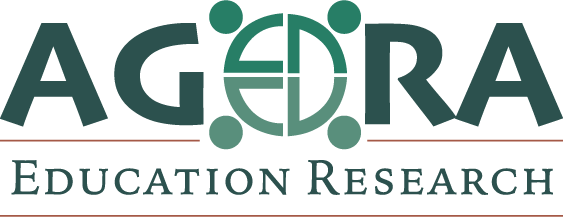This June, I had the opportunity to attend a conference organized by the American Association for the Advancement of Science (AAAS) in Washington, DC. The conference focused on the collection of demographic data within higher education institutions. As June is Pride month, it was especially timely to focus on the collection of sexual orientation and gender identity (SOGI) data by institutions of higher education, nonprofit groups, and as part of national surveys about college experience.
One of the big discussion points at the conference was the loss of federal data collections for SOGI demographic data, due to recent executive orders (EOs) and cuts to federal data collection agencies such as NCES.
I found myself considering the implications of these cuts. What might private data collectors and entities outside the federal government do to cover the data loss? Are there any opportunities or positive results that might feasibly occur, or would the gutting of federal data collection systems for demographic data (e.g., racial/ethnic, SOGI, disability, etc.) result in net information losses?
Taking the example of the SOGI data collection at institutions of higher education, I examine some possible implications below.
Why is demographic data collection important?
“Better data leads to better policy.”
– Travis York, Ph.D., Center for STEMM Education and Workforce (CSEW), AAAS
As higher education institutions work to improve student support and degree completion and faculty/staff support so that campuses remain vibrant communities that attract bright scholars, it makes sense that institutions would want to collect information on the demographic makeup of their students and their faculty/staff, to include sexual orientation and gender identity. There are many reasons such as:
- To understand which students are retained through graduation, and who leave before graduation,
- To understand which faculty/staff stay for longer periods of time,
- To understand how to support and encourage faculty and staff to innovate and improve their campuses, and
- To understand whose needs are being met and who still might have unmet needs.
While collection of some of these types of demographic data might no longer be possible at the federal level, due to shifts in staffing and closures of research offices at agencies as well as recent executive orders, the surveys needed to collect this information can move functionally to private collections. Non-federal data collectors might be nonprofits, private firms (e.g., marketing firms) and also higher education institutions.
What might be lost by shifts to private data collection?
First, the shift might lead to methodological issues: Private data are often based on convenience samples and are not necessarily representative at the level that institutions or researchers need. Standardization would not be possible without excellent data sharing or benchmarking, and so comparisons between institutions might become impossible.
Similarly, a loss of scope might be an issue: Population estimates and small group estimates are not always accurate when studying relatively smaller samples or with fewer respondents.
Another technical issue is the loss of richness: Federal surveys have the ability to attach a substantial amount of information (e.g., administrative data or demographics) to the outcome, which the private collection might not have.
What might be gained?
There is potential hope in the benefits of private data collection.
First, respondents might feel more comfortable providing data at a local or institutional level precisely because it is not large-scale. Privacy laws work differently on privately owned data compared to federal and state data; data governance repeatedly comes up as an issue at public institutions, for example. These perceptions might lead to higher response rates and greater data availability.
Further, institutions can keep their data private as they wish. They don’t need to share it. Many institutions consider forming consortia for data sharing and data governance discussions; however, they can always choose to participate in these cooperative groups only to the extent that it is mutually beneficial.
Another benefit is the granularity enabled by private data collection: There is potentially more liberty to add items and with more specificity. While government forms may need to serve many purposes and get unwieldy, the smaller private surveys can drill down more quickly to particular issues or topics. Further, a private survey can be flexible about items and wording. The user of the data can actually decide what to ask and how to ask it, rather than be subject to a “one-size-fits-all” approach to standard federal data collection.
Another benefit of smaller private data collections is the ability to make changes in real-time. For example, when asking questions about groups, terms can be changed, swapped and replaced as language or field changes, compared to government forms that often require many rounds of review and approval for changes, meaning they can easily become outdated.
Future of this work
Higher education institutions and nonprofit groups conducting this work are understandably concerned greatly with data governance and privacy; this was the topic of many conversations and presentations at the AAAS symposium. No one approach will work across institutions or higher education sectors. While it is clear that many decisions remain on how best to balance privacy and transparency, higher education institutions across sectors appear ready to continue the work.
As one panelist said, “It is important to remember that when we are collecting these data, we are collecting them from people…. Human beings,” underscoring the idea that these surveys and forms are about the people served and not just about the statistics they represent. This sentiment of service to students, faculty/staff, and communities that continuously underpinned all of the conference discussions is, to this attendee, a cause for optimism.


Leave a Reply